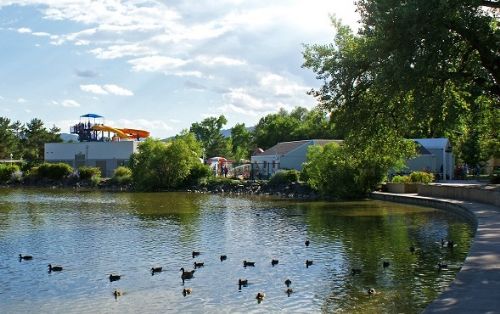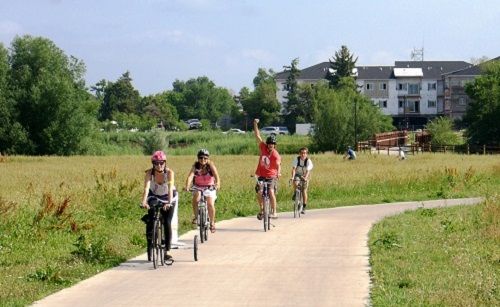-
![]()
Cities around the US and the world are beginning to develop and implement adaptation and resilience plans.
What do these terms mean in the context of city planning around climate change?
-
Adaptation is the actions taken to help communities and ecosystems cope with changing climate conditions in order to moderate potential harm or optimize potential beneficial opportunities. International Panel on Climate Change, AR5 Synthesis Report, 2014
Resilience: Resilient systems withstand, respond to, and adapt more readily to shocks and stresses to bounce back stronger after tough times, and live better in good times. City Resilience Framework, The Rockefeller Foundation and Arup
Both concepts are crucial to designing lasting city policies that will keep our communities, businesses, and environment healthy and thriving.
What does planning for adaptation and resilience look like?
- Beneficial outcomes of different policies and programs
- Reduced cost and increased lifespan of assets
- Minimized negative impacts on other systems
- Direct pathway of information from community members to policymakers
For example, solutions to our growing population can also address our evolving economy, infrastructure needs, and urban environmental challenges.
-
![]()
While we must make concerted efforts to reduce greenhouse gas emissions, historic emissions have and will continue to impact our climate. Climate change is an urgent challenge that requires us to develop and leverage extraordinary capacity for resilience and innovation across sectors. The past five years have been the hottest on record for the planet. Locally, we recently suffered record wildfires that impacted the Cache la Poudre watershed- a key source of water and pride for Fort Collins. In 2013, the Colorado Front Range experienced extreme flooding that killed people and destroyed homes, businesses, and public infrastructure. Climate science indicates that we should expect more of what we have been seeing recently in the future.
-
![]()
-
![]()
Assessments of potential climate impacts include:
- Vulnerability and risk assessments of key City services
- Repeated scientific study of hydrology, water supply and water demand
- Stormwater and floodplain management
- Study of tree canopy and potential impact of urban heat islands
Measures to reduce vulnerability include:
- Fold adaptation considerations into City planning and decision-making processes
- Physical modifications to structures
- Changing the way infrastructure is installed and operated to reflect changing conditions
- Amending or implementing new codes and policies
- Improved coordination, communication and response during extreme events
- Participation in regional peer learning networks focused on adaptation strategies
-
![]()
Make a Plan for Preparedness
- Define an emergency plan for your household
- Enroll in emergency notifications
- Monitor the daily air quality
- Create a clean room to protect indoor air quality during wildfires
Make Your Home Safe, Healthy, and Efficient
- Sign up for a free Healthy Home assessment for indoor air quality
- Sign up for a free home efficiency assessment through Larimer County
- Get rid of junk mail and learn about more energy efficient home cooling options
- Protect your family from wildfire smoke
Connect More with Your Neighborhood to Increase Safety
-
This story map seeks to inform the adaptation strategies of the City of Fort Collins and act as a communication tool for spreading extreme weather adaptation awareness throughout the region by exploring the history of extreme weather adaptation practices. The map encompass drought, fire, flood, heat, and wind events and the preparedness strategies utilized to meet these challenges.
-





